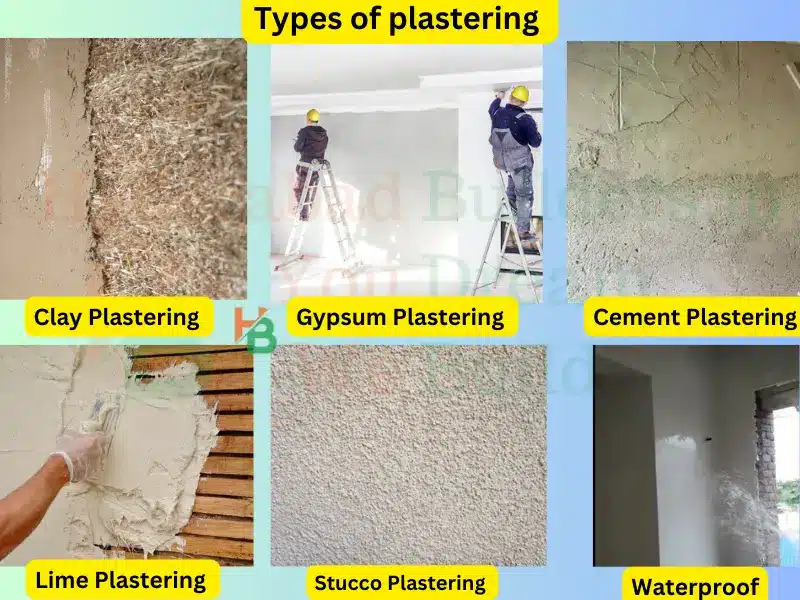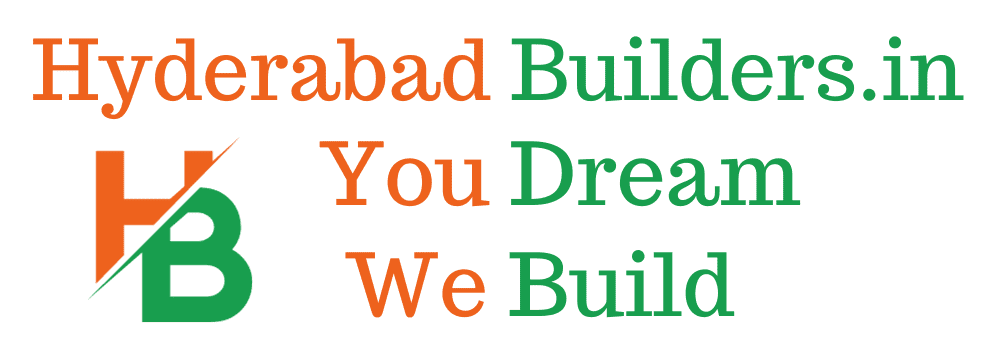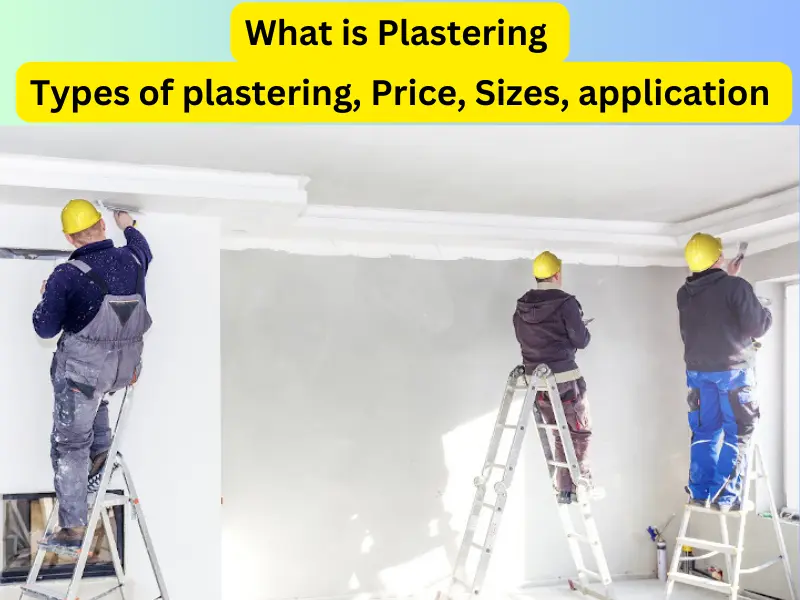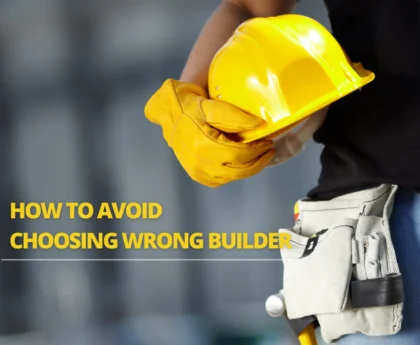In this article we are going to cover what is plastering? Types of plastering and Gypsum vs Cement plaster
What is Plastering?
Table of Contents
TogglePlastering is a construction technique used to create a smooth, even, and durable finish on walls, ceilings, and other surfaces. It involves the application of a thin layer of plaster material onto a substrate, typically made of masonry, concrete, or wood. Plastering serves several purposes, including:
- Surface Preparation: Before plastering, the substrate is prepared by ensuring it is clean, free of dust, and properly primed. Any cracks or imperfections may be repaired or filled to create a smooth base for the plaster.
- Application of Plaster: Plaster is mixed with water to form a workable paste, which is then applied to the prepared surface using various techniques such as troweling, spraying, or throwing. The plaster is spread evenly and smoothed out to achieve the desired finish.
- Creating a Smooth Finish: The plaster is worked and smoothed to eliminate any bumps, ridges, or imperfections. Depending on the desired result, multiple layers of plaster may be applied and smoothed out to achieve a flawless surface.
- Decoration: Plastering can also involve decorative elements such as ornamental moldings, textures, or patterns. These decorative features can enhance the aesthetic appeal of the surface and add architectural interest to a space.
- Protection and Durability: Plastering provides a protective coating that helps to shield the underlying structure from moisture, weathering, and wear and tear. It adds strength and durability to walls and ceilings, prolonging their lifespan.
- Insulation and Soundproofing: Some types of plaster contain insulating materials or additives that improve thermal and sound insulation properties, enhancing the comfort and acoustics of a building.
Types of Plastering In Construction

Cement Plastering:
- Cement plastering involves the application of a mixture of cement, sand, and water to the surfaces of walls or ceilings.
- It provides a durable and strong finish, suitable for both interior and exterior surfaces.
- Cement plastering is commonly used in construction for its versatility and resistance to weathering.
Gypsum Plastering:
- Gypsum plastering, also known as plaster of Paris (POP), involves the application of gypsum-based plaster to surfaces.
- It provides a smooth and fine finish, making it ideal for interior walls and decorative purposes.
- Gypsum plastering offers excellent fire resistance and is easy to work with due to its fast setting time.
Lime Plastering:
- Lime plastering utilizes lime as the primary binding material mixed with sand and water.
- It provides a breathable finish suitable for historic or heritage buildings, allowing moisture to escape from the walls.
- Lime plastering offers flexibility and can be used on various substrates, including masonry, cob, and timber.
Clay Plastering:
- Clay plastering involves the application of clay-based plaster on walls or ceilings.
- It provides a natural and breathable finish, suitable for eco-friendly and sustainable construction.
- Clay plastering regulates indoor humidity, absorbs odors, and offers thermal insulation properties.
Exterior Plastering:
- Exterior plastering, also known as rendering, involves applying a protective layer of plaster on the exterior surfaces of buildings.
- It helps to waterproof and weatherproof the structure while enhancing its appearance.
- Exterior plastering can be done using cement-based, lime-based, or acrylic-based materials, depending on the requirements and climate conditions.
Roughcast Plastering:
- Roughcast plastering is a textured finish applied to exterior walls to provide a rustic appearance.
- It involves throwing or spraying a mixture of cement, sand, and small stones onto the surface, followed by a trowel finish.
- Roughcast plastering offers good durability and weather resistance, making it suitable for traditional and contemporary architectural styles.
Gypsum vs Cement plaster
| Parameter | Gypsum Plaster | Cement Plaster |
|---|---|---|
| Water Curing | No need to have curing for gypsum | Must for 4 days |
| Setting Time | 4 hours | 36 hours |
| Ready for Primer | 72 hours | 360 hours |
| Surface Finish | Putty Finish | Rough Finish |
| Compressive Load Strength | 98,400 N | 72,400 N |
| Density | 1,333 kg/cu.m | 2,222 kg/cu.m |
| Fire Heat Sound Insulation | Yes | No |
| Raw Material | Gypsum powder commonly with hardeners | Cement + sand (Site mixed) · Cement + sand (Packaged) |
| Additional Materials | Alkali sulfate, alum, borax | N/A |
| Color | Pure white | Grey |
| Factory-made | gypsum plaster is factory made | No |
| Curing | Air curing for 24 hours and ready to paint after 72 hours | Wet curing for 7 days and drying plaster for at least 3 days |
| Application Areas | Internal | Internal and External |
| Minimum Thickness | 6 mm | 10 mm |
| Final Finish | Smooth | Rough |
| Ease of Use | Very easy | Not so easy |
| Per Square Feet Cost | High | Low |
| Recyclable | Yes | No |
| Thermal Conductivity | Low | High |
| Fire Resistance | High | Low |
| Rust Inhibitor | Yes | No |
| Sustainability | Yes | No |
| Environmental Impact | Low | High |
| Installation Time | Short | Long |
| Standard Packaging Size | 25 kg | 40 kg |
| Compressive Strength | 3.5 to 7.5 MPa (depending on ratio) | 5 – 7 MPa |
| Cost Per 100 Sq ft | Rs. 2,300/- | Rs. 2000 to 2600/- |
| Additional Punning for Smooth Surface | Rs. 2,300 | May require POP Punning (6-8 mm) on it |
| Finish | Smooth finish and Ready to receive paint | Depend on quality of sand |
Cost of Gypsum Plaster and Cement plaster Per sq ft
| Square Footage | Gypsum Plaster Cost (Rs.) | Cement Plaster Cost Range (Rs.) |
|---|---|---|
| 100 Sq ft | Rs. 2,300/- | Rs. 2000 to 2600/- |
| 200 Sq ft | Rs. 4,600/- | Rs. 4000 to 5200/- |
| 300 Sq ft | Rs. 6,900/- | Rs. 6000 to 7800/- |
| 400 Sq ft | Rs. 9,200/- | Rs. 8000 to 10400/- |
| 500 Sq ft | Rs. 11,500/- | Rs. 10000 to 13000/- |
| 1000 Sq ft | Rs. 23,000/- | Rs. 20000 to 26000/- |
Wall Plaster labor Cost with material cost
| Description | Rate Per sq.ft | 1000 sq.ft | 2000 sq.ft | 3000 sq.ft | 4000 sq.ft | 5000 sq.ft |
|---|---|---|---|---|---|---|
| Wall Plaster Labor cost | Rs.23-25/- | Rs.25,000 | Rs.50,000 | Rs.75,000 | Rs.1,00,000 | Rs.1,25,000 |
| plastering Material Cost (M-Sand, Cement) | Rs.30-35/- | Rs.35,000 | Rs.70,000 | Rs.1,05,000 | Rs.1,40,000 | Rs.1,75,000 |
| Total Cost of Wall Plaster with material | Rs.55-60/- | Rs.60,000* | Rs.1,20,000* | Rs.1,80,000* | Rs.2,40,000* | Rs.3,00,000* |
Plastering Surfaces and walls:
- Brick or Block Walls with Rough and Solid Surfaces:
- These surfaces provide mechanical adhesion for the plaster.
- Mechanical keys are formed when wet undercoat plaster dries, creating a bond between the plaster and the surface.
- Plaster keys help limit or restrain shrinkage of the cement in the undercoat plaster.
- Machine Pressed Bricks with High Density and Smooth Surfaces:
- These bricks absorb an appropriate amount of water, aiding in plaster adhesion.
- The degree of water absorption by dense, smooth surface bricks is known as suction.
- Proper suction helps the plaster adhere to the surface effectively.
- Blocks Produced by Lightweight Concrete:
- These blocks have large suctions, which can hinder plaster adhesion.
- To improve adhesion, water absorption can be reduced by using a liquid primer or spraying water before plastering.
- Surfaces with Low Suction:
- For surfaces with low suction, such as lightweight concrete blocks, two solutions are commonly used:
- PVA Bonding Agent: Polyvinyl acetate is brushed onto the surface. Plaster is applied while the PVA is still sticky, creating a bond.
- Polymer Bonding Agent: Surfaces are treated with a combination of silica sand and polymer. After the polymer dries, the bond is provided by silica sand grains.
- For surfaces with low suction, such as lightweight concrete blocks, two solutions are commonly used:
- Galvanized Steel Beads and Stops:
- Various types of galvanized steel beads and stops are available for use with plaster and plasterboard.
- Beads are used at junctions of wall to ceiling plaster and plaster to other materials, providing reinforcement and a clean finish.
- Galvanized steel stops are used to create perfect finishes at junctions of plaster to another material at angles.
Plastering is a construction technique used to create a smooth, even, and durable finish on walls, ceilings, and other surfaces. It involves applying a thin layer of plaster material onto a substrate and smoothing it to achieve the desired finish.
The most common types of plastering used in construction include cement plastering, gypsum plastering (plaster of Paris), lime plastering, clay plastering, exterior plastering (rendering), and roughcast plastering.
Gypsum plaster is made from gypsum powder commonly with hardeners and offers a smooth finish suitable for interior walls. Cement plaster, on the other hand, is made from a mixture of cement, sand, and water, providing a durable finish suitable for both interior and exterior surfaces.
Gypsum plaster sets faster (within 4 hours), requires no water curing, offers better fire resistance, and has lower thermal conductivity compared to cement plaster. It also provides a smooth finish and is easier to work with for interior applications.
In 2024 cost of gypsum plastering per sq ft is Rs 23- 25 in India
cost of cement plastering per sq ft is Rs 20- 26 in India
gypsum plaster can start to set within approximately 20-30 minutes after mixing with water. It achieves initial setting within 1-2 hours, during which the plaster begins to harden. The final setting, where the plaster reaches its maximum strength and becomes fully hardened, usually occurs within 24 hours.
cost of gypsum plastering in Hyderabad is 23- 25 per sq ft without materials.
cost of gypsum plastering in Hyderabad is 55-60 per sq ft with materials.




